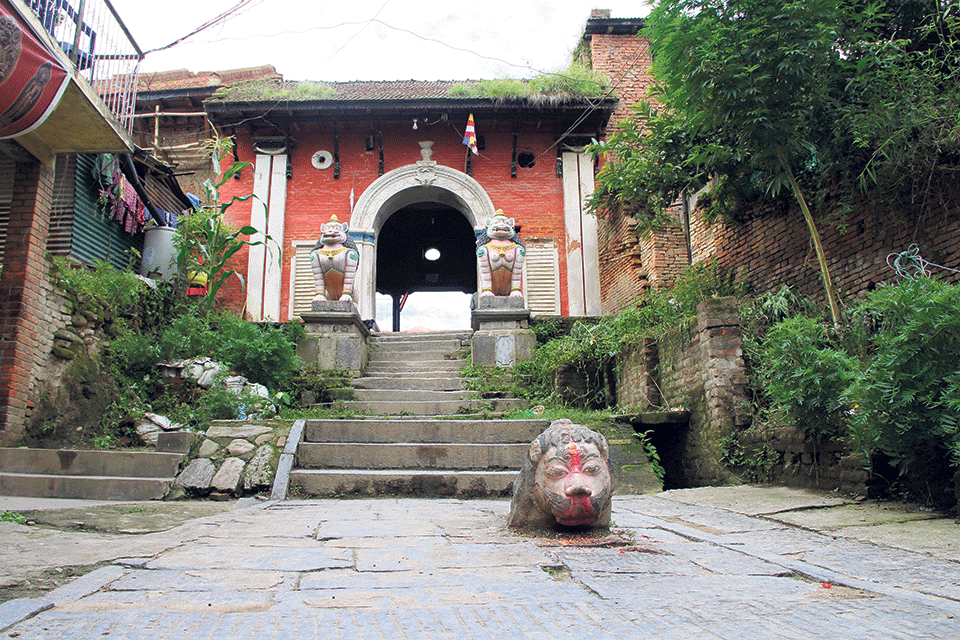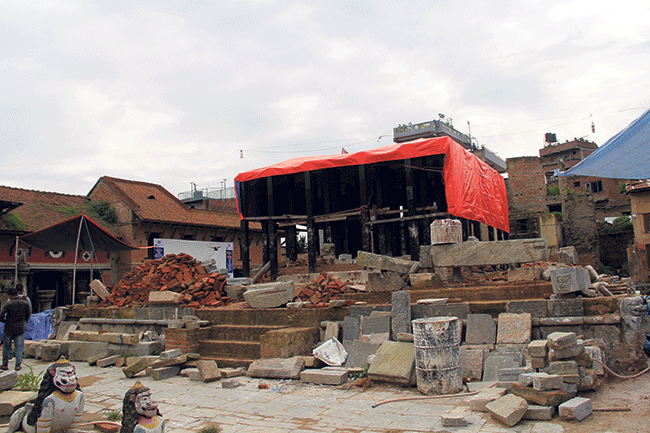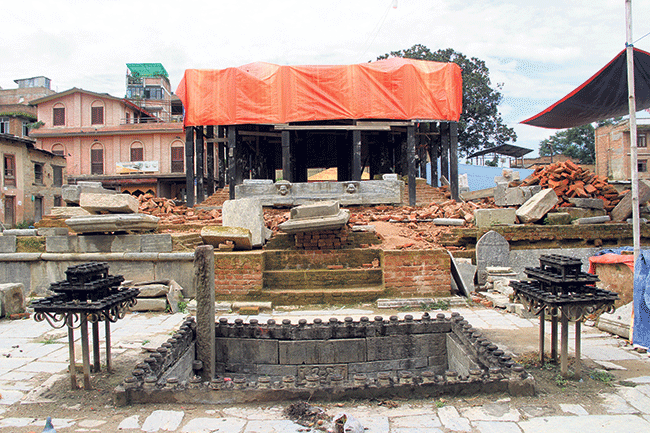'Ramailo Games' promotes local content and family games
1 year ago
Sr. correspondent at Republica.

KATHMANDU, July 29: As per traditional rules, it was Bungamati’s turn to initiate the chariot procession of Rato Machhindranath, after a 12 long year hiatus. However, the locals were not satisfied with the construction of the chariot and deemed the overall procession irregular. A few days after the start of the barha barsey mela, the devastating earthquake befell.
Consequently, the locals accused the irregularity in the construction of the chariot, and hasty chariot procession as the cause of the devastating 2015 earthquake. On the contrary, they were also grateful to the deity for minimizing human casualties.
It has been three years since the earthquake. The main temple is still awaiting reconstruction, compelling the center deity to seek shelter in a makeshift shack.
The legend behind the name Bungamati
Bungamati holds an interesting tale behind its identification. Kapil Bajracharya, Rato Machhindranath’s priest, also referred as a panneju explained, “During Bhaktapur’s Narendra Dev Malla’s regime, Bhaktapur, and the neighboring kingdoms of the Kathmandu Valley were suffering from famine, as a result of a 12-year-long drought. Seeking a solution to the problem, King Narendra Dev called on his astrologers, who said that Lord Gorakhnath was the reason behind the drought. They said he had captured all the snakes of the valley, and was sitting on top of them at Mirgasthali.” Bajracharya mentioned that it was only after Rato Macchindranath was brought in front of Gorakhnath that the latter stood to pay homage resulting in the snakes to escape, consequently ending the drought.
Rato Machhindranath’s journey to Kathmandu, however, consisted of a lot of struggles, including the reluctance of Demon King Shashi’s forbiddance of letting the deity travel to an unknown land. The priest resorted to a tantric ritual that transferred the soul of Rato Machhindranath into a bee, leaving his physical body at Kamaru Kamakhya, Assam. However, the demons, led by the deity’s father, realized that the soul was not present in its physical body. The agitated demon king confronted the travelers who had come to take Rato Machhindranath, which then led to a fight.
In hopes of gaining additional power to tackle the demon king, the priest summoned on Astamatrika, who provided them with five Bhairavs – Haygriv Bhairav, Swet Bhairav, Samhar Bhairav, Krodha Bhairav, and Chandra Bhairav. After defeating the demons, the travelers finally reached the present-day Bungamati. The dogs, carriers of the Bhairavs, cried out “bung” three times upon arriving Bungamati. That is how Bungamati is believed to have gotten its name.
The temple of Manakamana
The temple of Manakamana is situated on the right of the temple of Rato Machhindranath. According to Panneju Bajracharya, the Manakamana of Machhindra Bahal is the upper part of goddess Manakamana, while the lower body is situated in Gorkha.
“When Goddess Manakamana found out that Rato Machhindranatha was coming to Kathmandu, she disguised her upper body into a Jyapu couple. She then asked the deity for the permission to reside in the same vicinity as Machhindranath’s residence. Since then, she has been residing next to Rato Machhindranath, at Bungamati,” Bajracharya explained.
Cracks in the Manakamana temple were visible as the result of the 2015 earthquake. However, they have now been repaired. The Department of Archeology was given the responsibility of technical support for the reconstruction and rebuilding of the major three structures of the square. Including the Manakamana temple, the department is also heading the reconstruction of the Machhindranath temple and the Haygriv Bhairav temple, says Sabita Neupane -- archaeology officer at the Department of Archaeology.
Current scenario and challenges
Machhindranath’s temple was completely demolished by the earthquake. The courtyard still has rubbles scattered where the temple once stood. Along with the center temple, residential houses also await reconstruction.
The Government of Sri Lanka offered to fund the restoration of the important structures in the temple square. According to Kaji Pyakural, museum chief of monuments at the palace office in Patan, and the in-charge of Bungamati’s restoration project, per the agreement signed with the Nepali Government, the Government of Sri Lanka contributed Rs 47,445,016.29 for the restoration project. The project aimed at completing the project in the next two years. However, the July 2016 initiation has not been completed yet. Moreover, the aid amount has been revised to Rs 52,185,215.44. Citing the incompletion of work, an extension of six more months has been added as of now.
Speaking about the changes, Pyakural added, “The foundation of the main temple was made of mud mortar. After the earthquake, we dug seven feet deep and laid brick mat formation along with three feet brick wall using lime mortar instead of mud mortar in the foundation to strengthen the base. Likewise, there have been changes in the foundation and the wooden columns of the main temple.”
However, Sunil Maharjan, the secretary of Bungamati Reconstruction and Development Council informed, “The reconstruction of the main temple in the square is at a halt because the Department of Archaeology and the locals disagree on the construction materials. The key demand of the locals is the use of traditional materials, such as Maa Appa (bigger bricks that are found in ancient structure) instead of regular bricks. ”
The foundation of the temple has been built, but the locals are not happy with the construction materials of the foundation. They are demanding for the reconstruction of the foundation. Meanwhile, along with original 16 stone columns above the foundation, extra 32 wooden pillars have been added to strengthen the base.
Explaining the halt in the restoration work, Neupane shared, “The restoration process is being slowed down because of the unavailability of building materials and there is not enough skilled manpower to replicate the past infrastructure.”
Bungamati is among the 52 ancient settlements that have been accepted as the heritage site by Nepal Government.





Leave A Comment